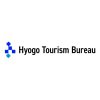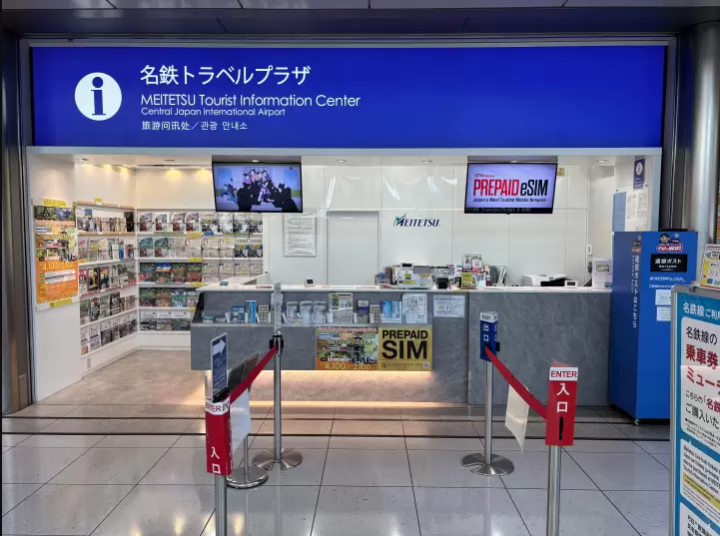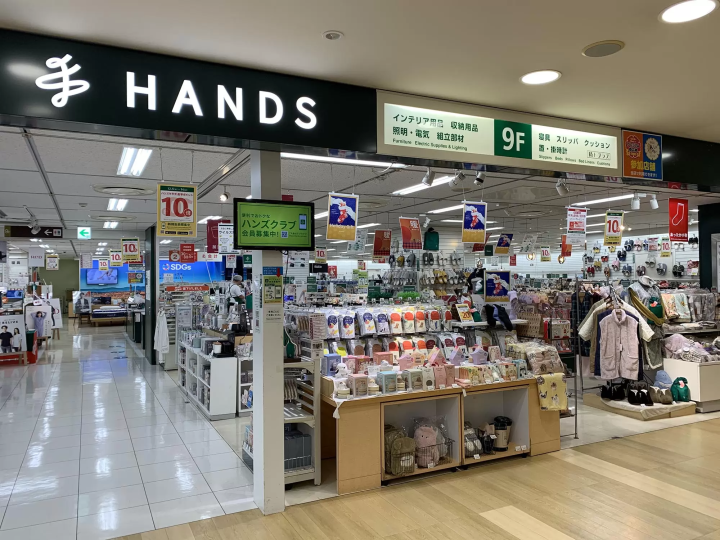[Hyogo Awaji] About 500 years of history! Experience “Awaji Pingyo Joruri Backstage Tour”!
![[Hyogo Awaji] About 500 years of history! Experience “Awaji Pingyo Joruri Backstage Tour”!](https://resources.matcha-jp.com/resize/720x2000/2023/09/19-146188.webp)
The historic ``Awaji Ningyo Joruri'' (Awaji Ningyo Joruri) is currently performed regularly at the ``Awaji Puppet Theater,'' and ``Backstage Tours'' are also held. At Awaji Doll Theater, we change the performances every month so that you can enjoy a variety of performances. This time, I would like to introduce my experiences at the "Backstage Tour and Ebisu Mai" and "Keisei Awa no Naruto Junrei Uta no Dan" performances that I participated in.
-
Table of Contents
- About 500 years of history! Experience “Awaji Pingyo Joruri Backstage Tour”!
- Backstage tour and Ebisumai
- Junrei song stage of “Kanjo Awa no Naruto” that can be enjoyed in English, Chinese, etc.
- ``Ebessan's Fortune Ware'' Let's get lucky souvenirs!
- Registered in "Michelin Green Guide Hyogo"! Awaji Puppet Theater
- [Official] Hyogo Prefecture tourism site HYOGO! navigation
About 500 years of history! Experience “Awaji Pingyo Joruri Backstage Tour”!
![[Hyogo Awaji] About 500 years of history! Experience “Awaji Pingyo Joruri Backstage Tour”!](https://resources.matcha-jp.com/resize/720x2000/2023/09/19-146189.webp)
There were over 40 puppet theaters on Awaji Island from the Edo period to the beginning of the Showa era. Minami-Awaji City is the birthplace of the Awaji Puppet Theater, and the Awaji Puppet Theater has inherited the tools of the Yoshida Denjiro Theater and continues to perform there. On August 8, 2012, the Awaji Puppet Theater, a 142-seat theater designed by architect Shuhei Endo, opened.
![[Hyogo Awaji] About 500 years of history! Experience “Awaji Pingyo Joruri Backstage Tour”!](https://resources.matcha-jp.com/resize/720x2000/2023/09/15-146061.webp)
After entering the museum, first buy a ticket at the reception on the second floor. Please pay attention to the signs and photos around the counter. The large "golden signboard" displayed on the upper tier is a signboard with gold letters that was hung at the Kido entrance by the Awaji Doll Troupe during performances. In the past, there was a rule that no other puppet performances were allowed within the four ri areas, and there was also protection from the imperial family and feudal lords.
![[Hyogo Awaji] About 500 years of history! Experience “Awaji Pingyo Joruri Backstage Tour”!](https://resources.matcha-jp.com/resize/720x2000/2023/09/15-146035.webp)
A sign called ``Maneki'' is posted directly above the counter. These are the names of the members (performers) written in large ink on each page.
![[Hyogo Awaji] About 500 years of history! Experience “Awaji Pingyo Joruri Backstage Tour”!](https://resources.matcha-jp.com/resize/720x2000/2023/09/15-146028.webp)
Before the performance, you can get a feel for the venue's interior and atmosphere, and see the dolls on display.
![[Hyogo Awaji] About 500 years of history! Experience “Awaji Pingyo Joruri Backstage Tour”!](https://resources.matcha-jp.com/resize/720x2000/2023/09/15-146030.webp)
The walls are covered and decorated with Awaji tiles, a specialty of Awaji Island. The theater is illuminated by lanterns, giving it a very quiet and peaceful atmosphere.
![[Hyogo Awaji] About 500 years of history! Experience “Awaji Pingyo Joruri Backstage Tour”!](https://resources.matcha-jp.com/resize/720x2000/2023/09/15-146029.webp)
At the rear of the audience seats, there are materials on display, where you can learn more about the origin of Awaji Ningyo Joruri, tayu (storytelling), shamisen players, taiko drum beaters, and puppeteers.
Backstage tour and Ebisumai
![[Hyogo Awaji] About 500 years of history! Experience “Awaji Pingyo Joruri Backstage Tour”!](https://resources.matcha-jp.com/resize/720x2000/2023/09/15-146037.webp)
Finally, the backstage tour and Ebisu dance performance begin. First, we will start with the "Backstage Tour" where you can see behind the scenes.
![[Hyogo Awaji] About 500 years of history! Experience “Awaji Pingyo Joruri Backstage Tour”!](https://resources.matcha-jp.com/resize/720x2000/2023/09/15-146038.webp)
Commentary on the "Backstage Tour" will be provided by "members" who are performers. The costumes worn by the puppeteers are called ``kurogo'' (black robes), and it has the meaning of erasing the presence of ``no'' people on stage.
![[Hyogo Awaji] About 500 years of history! Experience “Awaji Pingyo Joruri Backstage Tour”!](https://resources.matcha-jp.com/resize/720x2000/2023/09/15-146039.webp)
The puppeteers wear clogs of different heights depending on their height.
![[Hyogo Awaji] About 500 years of history! Experience “Awaji Pingyo Joruri Backstage Tour”!](https://resources.matcha-jp.com/resize/720x2000/2023/09/15-146040.webp)
During the backstage tour, you can wear these high geta shoes and take photos surrounded by the dolls.
![[Hyogo Awaji] About 500 years of history! Experience “Awaji Pingyo Joruri Backstage Tour”!](https://resources.matcha-jp.com/resize/720x2000/2023/09/15-146043.webp)
When you look out over the audience seats from the front of the stage, you'll be greeted by the sight of dazzling spotlights.
![[Hyogo Awaji] About 500 years of history! Experience “Awaji Pingyo Joruri Backstage Tour”!](https://resources.matcha-jp.com/resize/720x2000/2023/09/15-146062.webp)
Normally, it is difficult to see the scenery from the side of the stage.
![[Hyogo Awaji] About 500 years of history! Experience “Awaji Pingyo Joruri Backstage Tour”!](https://resources.matcha-jp.com/resize/720x2000/2023/09/15-146063.webp)
![[Hyogo Awaji] About 500 years of history! Experience “Awaji Pingyo Joruri Backstage Tour”!](https://resources.matcha-jp.com/resize/720x2000/2023/09/15-146044.webp)
On the backstage tour, you can feel the unique stage of puppet theater without any sense of distance.
![[Hyogo Awaji] About 500 years of history! Experience “Awaji Pingyo Joruri Backstage Tour”!](https://resources.matcha-jp.com/resize/720x2000/2023/09/15-146046.webp)
It replaces the script, a line called yukabon, which is read out on stage by a narrator called tayu.
![[Hyogo Awaji] About 500 years of history! Experience “Awaji Pingyo Joruri Backstage Tour”!](https://resources.matcha-jp.com/resize/720x2000/2023/09/15-146047.webp)
The book is written in joruri characters and is difficult to read. The tayu narrates the verses written in vermilion in a staged manner.
![[Hyogo Awaji] About 500 years of history! Experience “Awaji Pingyo Joruri Backstage Tour”!](https://resources.matcha-jp.com/resize/720x2000/2023/09/15-146048.webp)
The staff will happily and interestingly talk about how the dolls work and how to move them. You can enjoy the valuable experience of puppet theater only available on the "Backstage Tour".
![[Hyogo Awaji] About 500 years of history! Experience “Awaji Pingyo Joruri Backstage Tour”!](https://resources.matcha-jp.com/resize/720x2000/2023/09/15-146049.webp)
The ``Ebisu Mai'' performance is finally starting. Ebisu-sama enters on a boat. We are praying for the blessings of the sea and the mountains to make everyone's wishes come true. ``I've got another offering!'' Ebisu-sama was in a good mood and drank the sacred sake.
![[Hyogo Awaji] About 500 years of history! Experience “Awaji Pingyo Joruri Backstage Tour”!](https://resources.matcha-jp.com/resize/720x2000/2023/09/15-146050.webp)
In the closing scene, Ebisu-sama brings happiness and dances, saying ``Happy'' and ``Happy!''.
Junrei song stage of “Kanjo Awa no Naruto” that can be enjoyed in English, Chinese, etc.
![[Hyogo Awaji] About 500 years of history! Experience “Awaji Pingyo Joruri Backstage Tour”!](https://resources.matcha-jp.com/resize/720x2000/2023/09/15-146052.webp)
Next, we will introduce the performance of ``Keisei Awa no Naruto Junrei Uta no Dan.''
![[Hyogo Awaji] About 500 years of history! Experience “Awaji Pingyo Joruri Backstage Tour”!](https://resources.matcha-jp.com/resize/720x2000/2023/09/15-146053.webp)
Audio guides in English, Chinese, and Korean are available for free rental during performances. If you are interested, please ask the staff.
At the entrance to the audience seats, there is paper to wrap the ``Ohire''. Before the performance begins, take out your coins and prepare your ``ohire''. At the end of the play, when the curtain begins to close, you will be given a signal to throw the ball as hard as you can toward the curtain.
*``Ohire'' refers to coins wrapped in paper and thrown onto the stage from the audience seats.
![[Hyogo Awaji] About 500 years of history! Experience “Awaji Pingyo Joruri Backstage Tour”!](https://resources.matcha-jp.com/resize/720x2000/2023/09/15-146054.webp)
Before watching the play, a member of the theater will explain how the puppets are used in groups of three and the roles of the three puppeteers.
![[Hyogo Awaji] About 500 years of history! Experience “Awaji Pingyo Joruri Backstage Tour”!](https://resources.matcha-jp.com/resize/720x2000/2023/09/15-146051.webp)
The play performance begins. In ``Kanjo Awa no Naruto Junreika no Dan,'' the puppets' unique facial expressions and movements skillfully express the emotions of the characters.
![[Hyogo Awaji] About 500 years of history! Experience “Awaji Pingyo Joruri Backstage Tour”!](https://resources.matcha-jp.com/resize/720x2000/2023/09/15-146055.webp)
Tayu and shamisen players express the situation of the scene and the emotions of the characters. Puppet puppets are used to accompany this performance.
``Ebessan's Fortune Ware'' Let's get lucky souvenirs!
![[Hyogo Awaji] About 500 years of history! Experience “Awaji Pingyo Joruri Backstage Tour”!](https://resources.matcha-jp.com/resize/720x2000/2023/09/15-146056.webp)
Finally, let's buy some souvenirs from Awaji Puppet Theater. Of course, we also sell original goods that can only be purchased here.
![[Hyogo Awaji] About 500 years of history! Experience “Awaji Pingyo Joruri Backstage Tour”!](https://resources.matcha-jp.com/resize/720x2000/2023/09/15-146057.webp)
The most popular one is ``Ebessan's Fortune''. We recommend the kawara rice cracker with the doll ``Otsuru-chan'' on it, which will see you off at the exit. You can also find the famous "Otsuru-chan Senbei".
Registered in "Michelin Green Guide Hyogo"! Awaji Puppet Theater
![[Hyogo Awaji] About 500 years of history! Experience “Awaji Pingyo Joruri Backstage Tour”!](https://resources.matcha-jp.com/resize/720x2000/2023/09/19-146191.webp)
A large mark that is the first thing you see when you enter the audience seats. This is the Awaji Puppet Theater's logo "Den". We are carrying on the props and crest of the Yoshida Denjiroza Theater, which has been around since the Edo period.
``Awaji Ningyo Joruri'' is a traditional performing art that should be protected, and it is also a piece of Japanese culture that can be shared with the world. Please come and experience the traditional performing arts that have been going on for about 500 years. In the 2016 Michelin Green Guide Hyogo, it was awarded two stars for being ``worth a detour.''
Access to Awaji Puppet Theater
[Use of car]
■"Access from Honshu"
Kobe/Sannomiya ⇒ Kobe Awaji Naruto Expressway ⇒ Tarumi JC/IC ⇒ Kobe Awaji Naruto Expressway 57.6km / approximately 46 minutes
⇒ Seidan Mihara IC ⇒ General road 8.6km / about 15 minutes ⇒ Awaji Puppet Theater
■"Access from Shikoku"
Shikoku ⇒ Takamatsu Expressway/General Highway (National Route 11) ⇒ Naruto IC ⇒ Kobe Awaji Naruto Expressway 16 km / approximately 14 minutes
⇒ Awajishima Minami IC ⇒ General road 8.3km / about 15 minutes ⇒ Awaji Doll Theater
■“Awaji Island bus search app “busmo””
You can easily search for express buses from Osaka, Kobe Sannomiya and Tokushima to Awaji Island. You can also search for transfers to route buses and community buses within Awaji Island.
Awaji Puppet Theater
Address: 1528-1 Fukurako, Minamiawaji City, Hyogo Prefecture
TEL:0799-52-0260
Price: 1,800 yen for adults, 1,300 yen for junior high and high school students, 1,000 yen for elementary school students, 300 yen for infants (3 years old and older)
Business hours: 9:00-17:00
Closed: Every Wednesday, year-end
Parking lot: 25 spaces (up to 2.1m in height)
Awaji Ningyo Joruri Museum
Address: 880 Ichisanjo, Minamiawaji City, Hyogo Prefecture
TEL:0799-42-5115 FAX:0799-42-5115
Fee: Free
Business hours: 10:00-17:00 Price: Free
Closed: Mondays (or the next day if it is a public holiday); Closed during the year-end and New Year holidays (December 28th to January 4th)
[Official] Hyogo Prefecture tourism site HYOGO! navigation
The official website of Hyogo Tourism Headquarters, which provides tourist information for Hyogo Prefecture (Kobe, Himeji, Kinosaki, Awaji Island, etc.). There is a lot of recommended travel information, including special sightseeing spots such as Hyogo Prefecture's Japanese heritage sites and cycling, as well as model courses where you can enjoy hot spring culture and Japanese sake, so be sure to check it out!
Welcome to Hyogo Hyogo is a gateway to the Kansai region, which nurtures the blessed land that connects the Sea of Japan, the Chugoku Mountains, and the Seto Inland Sea, as well as the blessed climate. There are many spectacular views that will catch your eye, such as Himeji Castle, a World Heritage Site that was selected as one of the 100 Best Cherry Blossom Spots, and the panoramic night view from Mt. Rokko. The world-famous Kobe brand, KOBE BEEF, which is synonymous with Tajima beef, is one of Japan's leading beefs, and the sake rice ``Hyogo Yamada Nishiki'' is a gem that will surprise your tongue. Arima Onsen is a famous hot spring, and Kinosaki Onsen has appeared in many literary works. Surrounded by nature, you can relax your mind and body. You can come across memorable sounds such as the thunderous sounds of the whirlpools of Naruto on Awaji Island, and the dynamic sounds of the fireworks festivals held in various places in the summer. In the herb gardens and botanical gardens in the prefecture, you will be healed by the gentle and pleasant scent of herbs and flowers throughout the four seasons. Enjoy a new journey in Hyogo that stimulates the five senses of sight, taste, touch, hearing, and smell.
The contents on this page may partially contain automatic translation.






























![[Wakayama Sign] Plums and plum wine](https://resources.matcha-jp.com/resize/720x2000/2025/12/08-252248.webp)

![[2025 Update] Introducing free Wi-Fi spots in Tokoname City , Aichi Prefecture](https://resources.matcha-jp.com/resize/720x2000/2025/12/16-253074.webp)

